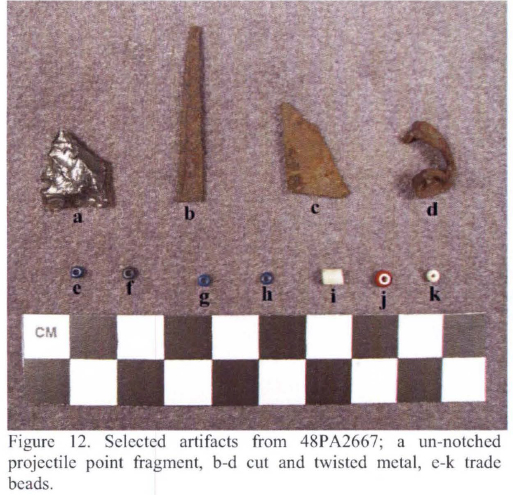
48PA2667 was recorded soon after a 2003 fire burned through the area. Eakin (2005:6-7) describes the site as:
This is a campsite and bighorn sheep processing area about 20 x 20 m in size, situated on a 20-degree slope…. Cultural material includes hundreds of obsidian flakes, an un-notched projectile point sourced to Obsidian Cliff, four types of trade beads, sheet iron, butchered bighorn sheep (n=20) and medium artiodactyl (n=63) bone, and up to 200 pieces of additional unidentifiable bone of the same size class (Figure 12). Six late-term or newborn long bone shaft fragments indicate occupation coincident with the late spring lambing period. The metal items are unique as one (Figure 12b), characterized by an angular edge, could be discard generated during metal arrow point manufacture. Another (Figure 12d) could have resulted from deliberate bending or the manner in which it was cut, possibly with a chisel or shears. Together these artifacts indicate an early historic, Native American cultural context. Slope wash processes are currently re-burying the site.

Beads from 48PA2667 were recorded in the University of Wyoming Archaeological Repository in February 2022.
Bead Photos
References
Eakin, D.H. 2005. Evidence for Shoshonean Bighorn Sheep Trapping and Early Historic Occupation in The Absaroka Mountains of Northwest Wyoming. In University of Wyoming/National Park Service Research Center 29th Annual Report, edited by H.J. Harlow, and M. Harlow, pp. 74-86. University of Wyoming Graphic Arts and Publications, Laramie.
